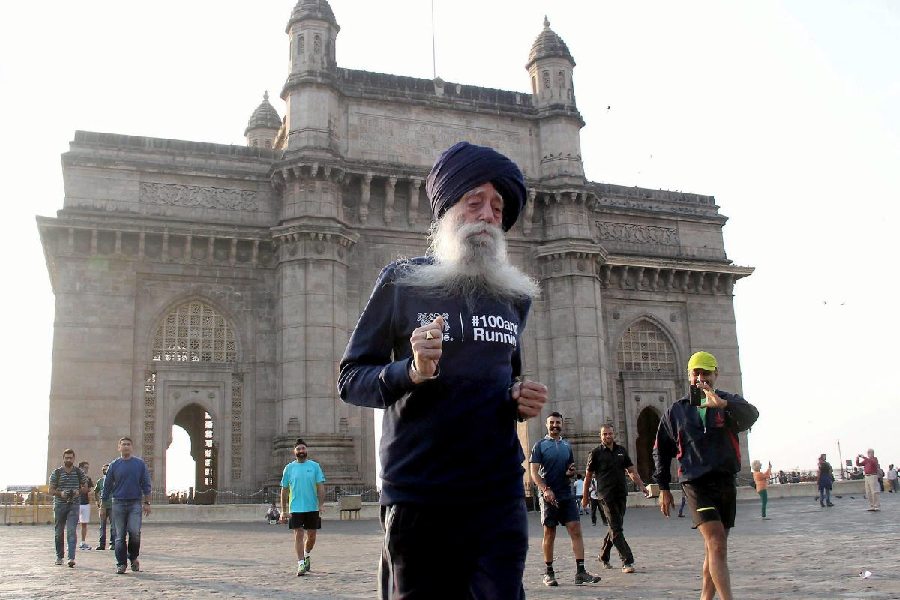 |
| Goya, Sleep of Reason |
“Slowness”, my friend was typing on Skype from far away, “I have to do an interview on slowness. Any thoughts?” “There’s the Kundera novel”, I wrote back, “And Keats: foster-child of silence and slow time.” Then I began to notice how, in Skype’s messaging window, the handless little yellow pencil — whose job it is to indicate that a response was being typed at the other end — kept making neurotic writing motions and would, from time to time, give a deathly shudder and collapse, to pick itself up again and continue scribbling with the same manic energy. But, for the rest of the day, the phrase, slow time, kept going round and round in my head — like a large bird circling the skies.
What the words brought back was a specific kind of slowness, which we encounter only in music and in cinema. I’ve come round to believing that there are certain films and pieces of music that are not meant to be watched or listened to while being fully awake all the time. And their soporific quality is deliberately created by their makers; that is how they are supposed to work on us, and into us. For me, this deep, dark, dream-delving slowness goes back to Wagner, although I can imagine that had I been as keen a listener of Hindustani classical music, I could as easily have worked it back to the drawing out of an alaap.
I remember going for a superlative production of Parsifal many years ago as a student. In Parsifal — Wagner’s last opera — the music is slowly crushed by its own superhuman weight. Too heavy to move (like so many of the great divas of opera), it is stilled by its own gravity into something static, yet continually changing and shimmering with life. This production lasted for almost six hours and had two, perhaps even three, intervals. It swallowed up our entire evening, and ejected us late into the summer’s night, aroused, weak-kneed and shaken to the core. During the performance, while Gurnemanz was singing an interminable aria about the Grail turning time into space, the audience was absolutely quiet. Then, suddenly, there soared above the zen-like music the sound of loud, long and lion-like snoring. Yet, amazingly, the snores felt like part of the grain of Wagner’s music (as did Kundry’s moaning) — as if it were the intended, natural and inevitable effect of the music on the body and mind.
Both Nietzsche and Mann have written about the sinisterness of Wagner’s designs on the listener. The music gets under our skin and into our sleep, taking over something far more interior than simply our senses or our aesthetic and philosophical sensibilities. Its claims are on nothing less than our unconscious, where all the ladders start. Each opera by Wagner, because it makes us sit and listen and watch for hours, creates its own memory system through a kind of sublime tediousness, a web of repeated and varied leitmotifs. The effect of that musical memory is as much to make us forget as to induce recollection. So, the distinction between remembering and forgetting, between making and not making an effort to listen, becomes blurred. What we forget becomes what we most deeply retain, because forgotten things sink to the rock-bottom and stay there like an undiscovered shipwreck on the ocean floor.
This drama of forgetting is also what most of Wagner’s operas are about. Think of the Ring, Tristan and Isolde and Parsifal. They are all about cycles of forgetting and remembering, losing and recovering, and then forgetting or losing all over again what you thought you had remembered or recovered. (No wonder the Germans loved Shakuntala.) In Wagner’s universe, nothing is ever quite kept, and nothing is ever quite lost. Everything remains suspended in some sort of a vast musico-memorial cellar or attic, which we enter and explore most fully when we let go of our waking inhibitions and resistances and sink into a kind of musically enhanced drowsiness, or when we recall the music later without actually listening to it. (Did Wagner know Coleridge’s “Kubla Khan”?) That is why Wagner’s music can appear to be dangerous (“Beware! Beware!”). It takes us beyond consciously held intellectual, political and critical positions, towards a negative capability that is larger and more amoral than our reasoned responses to, say, anti-semitism or totalitarian power.
It doesn’t matter if you haven’t read the libretto or don’t know the story, or if you don’t have a word of German. Sit in the dark, close your eyes, ignore what’s happening on stage if it looks too distractingly avant garde, and surrender to the music. And don’t be ashamed if you fall asleep. But if you are the sort who finds it difficult, for psychological or political reasons, to give yourself to something larger than yourself, or to let go, then, perhaps, Wagner isn’t for you. He demands no musical or intellectual expertise or preparation other than a surrender to the logic of the irrational and all-encompassing.
Slowness is essential to such a response. If the music were chopped up into manageable little bits (as in a Mozart or Handel opera), instead of making seamless transitions from one universe to another for hours on end, it could not have lulled us into this, somewhat idiotic, state of receptivity. And after one has been through this idiocy, it becomes all the more rewarding to pull it up into one’s intelligent, thinking life, to read and study and make connections and analyses. But each on its own remains an incomplete response. Yet, if I had to choose between these two ways of listening to Wagner, or didn’t have the time for both, I would go for the idiotic rather than the analytical.
The memory of being put to sleep by Parsifal is connected with my experience of watching two films — Tarkovsky’s Mirror and David Lynch’s Inland Empire. I don’t think the latter could have existed without the former. Both are about the confusion, sadness and terror of certain baffling and painful experiences repeating themselves without resolution in our lives. They are both about the doubling of loss (a doubled-loss double bill), about déjà vu without the consolation of return or progress. I watched them both, for the first time, in bed, late at night and in a state of extreme tiredness, nodding off frequently. So, with neither film have I been able to work out what was going on at the level of the plot — and I have the feeling that the films were urging me to give up trying to do so. But I found it impossible to stop watching them and go off to sleep, even when I was fighting to keep awake. And the next morning, I realized how deeply they had sunk in. The feeling-world of the film informed everything I did, as a powerfully happy or sad dream determines the way we act and feel the day after, even when we can’t remember what we saw. Not only its feeling-world, but also the tempo of the film shaped the rhythms of my day. I did perfectly banal things, like making the bed or taking a bath, to the pace of the film, playing on a loop somewhere in the recesses of the body’s memory.
Writers could slow us down too: the opening paragraphs of James’s Portrait of a Lady about afternoon tea on the lawn, or Proust’s narrator trying to sleep, or Nikhilesh’s monologues in Ghare Baire as his wife’s situation begins to dawn on him. But the problem with reading is that you have to do it with your eyes open — or do you? Think of how Imogen falls asleep in Cymbeline while reading Ovid’s Metamorphoses, or how the narrator in Chaucer’s Book of the Duchess dozes off in the middle of The Romance of the Rose. In both instances, to fall asleep is to wake up more keenly into the truth and fictions of what was being read. When a book, film or piece of music turns magically into space, into a zone of adventure where we can wander off and lose ourselves, who is to say where waking ends and dreaming begins, or art steps back and life comes forward?











